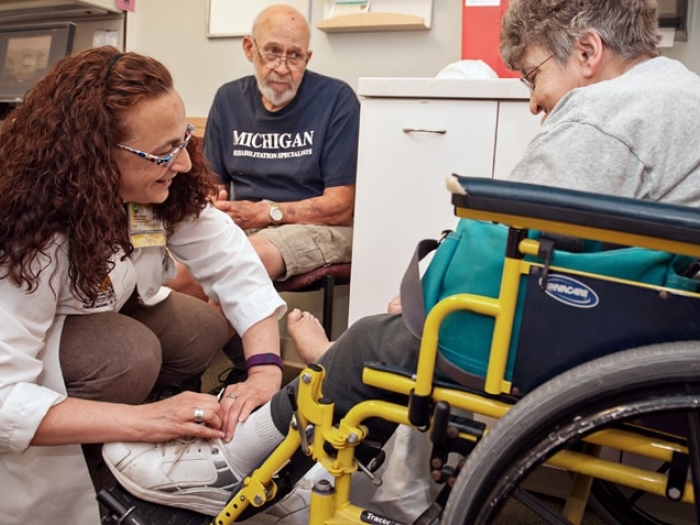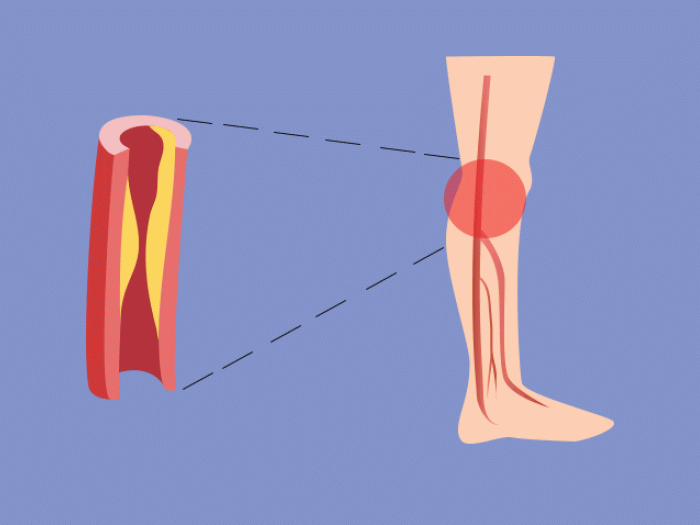Sidelined by extreme leg pain, a PAD patient finds hope and relief with a noninvasive procedure.
7:00 AM
Author |

Marie LaGrow never thought she'd have the strength again to interact with her growing brood of 14 grandchildren.
Today, the peripheral artery disease (PAD) patient is keeping up just fine.
MORE FROM MICHIGAN: Sign up for our weekly newsletter
As she looks forward to the birth of another grandchild, Marie recalls her health decline and how she finally got her life back.
Diagnosed in 2015 with a slight blockage in her abdominal aorta, Marie experienced only mild symptoms. Her cardiologist suggested the blockage be monitored.
But over the next few years, Marie noticed a significant reduction in her energy levels. Routine activities such as house cleaning and grocery shopping became increasingly difficult for the 72-year-old resident of Brighton, Michigan.
Frustrated by her doctor's recommendation to exercise more, a task she found nearly impossible because of excruciating leg pain, Marie felt her quality of life would never improve.
That is, until her condition led her to the University of Michigan Frankel Cardiovascular Center — where she met with vascular surgeon Matthew Corriere, M.D., who issued the PAD diagnosis.
What is PAD?
Peripheral artery disease occurs when plaque builds up in the arteries and prevents blood from getting to the muscle and tissue. This plaque buildup is most commonly found in the lower extremities, typically in the muscle and tissue of the calf.
PAD can also affect arteries of the abdomen or pelvis.
Symptoms of PAD include:
-
Cramping or tiredness in leg muscles while walking or exercising (also known as claudication) that subsides at rest
-
Pain in the legs or feet that wakes you up at night
-
Numbness or loss of sensation in the affected limb
-
Sores that heal slowly or do not heal
-
Differences between limbs in color or warmth
-
Decreased rate of hair and nail growth on the affected limb
-
Foot pain while at rest
Treatment brings relief
Corriere was aware of Marie's inability to exercise, a treatment commonly recommended for PAD patients.
SEE ALSO: Guided Exercise Program for Peripheral Artery Disease Patients Now Covered by Medicare
Instead, he suggested a minimally invasive procedure in which a stent would be inserted to treat the blockage in both legs.
Although initially apprehensive, Marie decided this procedure was right for her.
"I was in so much pain," she says, noting that she was ready to try anything to relieve her symptoms.
Today, she is pain-free and couldn't be happier: "I left the hospital the day of my procedure and instantly noticed a difference. I felt like weights had been taken off my feet."
The procedure, she adds, "has given me my life back."
With her newfound function, Marie looks forward to her exercise, which consists of walking up to 45 minutes each day.
Most important, her grandchildren are enjoying an energized grandma who's keeping up with them like never before.

Explore a variety of healthcare news & stories by visiting the Health Lab home page for more articles.

Department of Communication at Michigan Medicine
Want top health & research news weekly? Sign up for Health Lab’s newsletters today!





